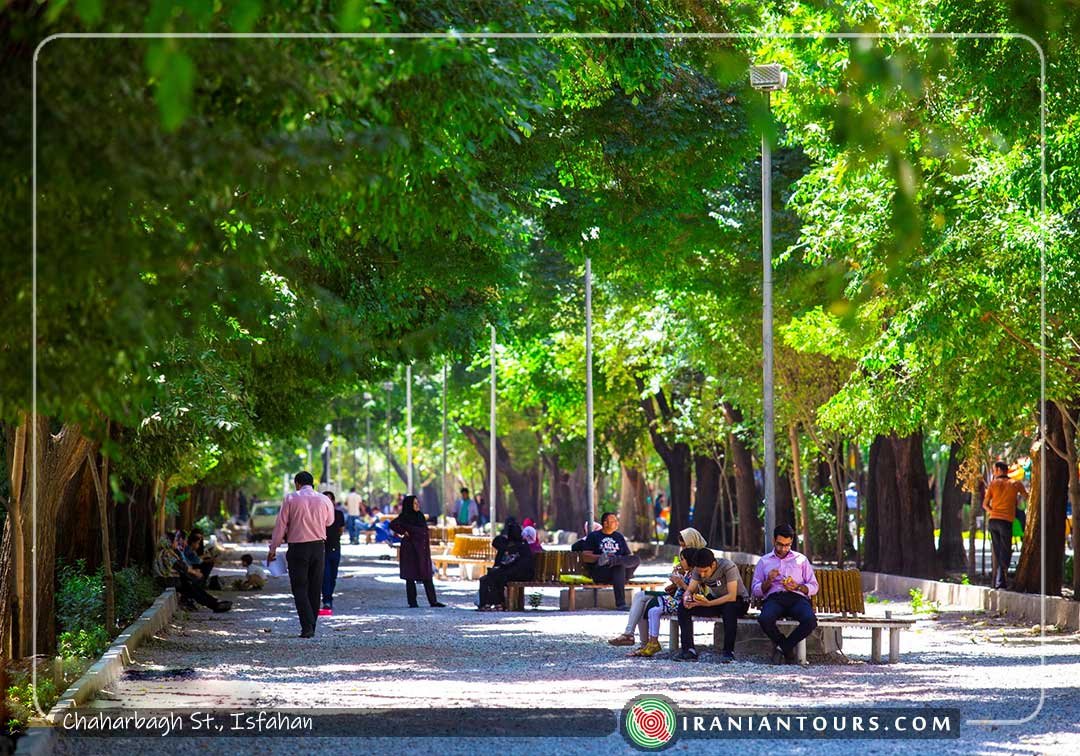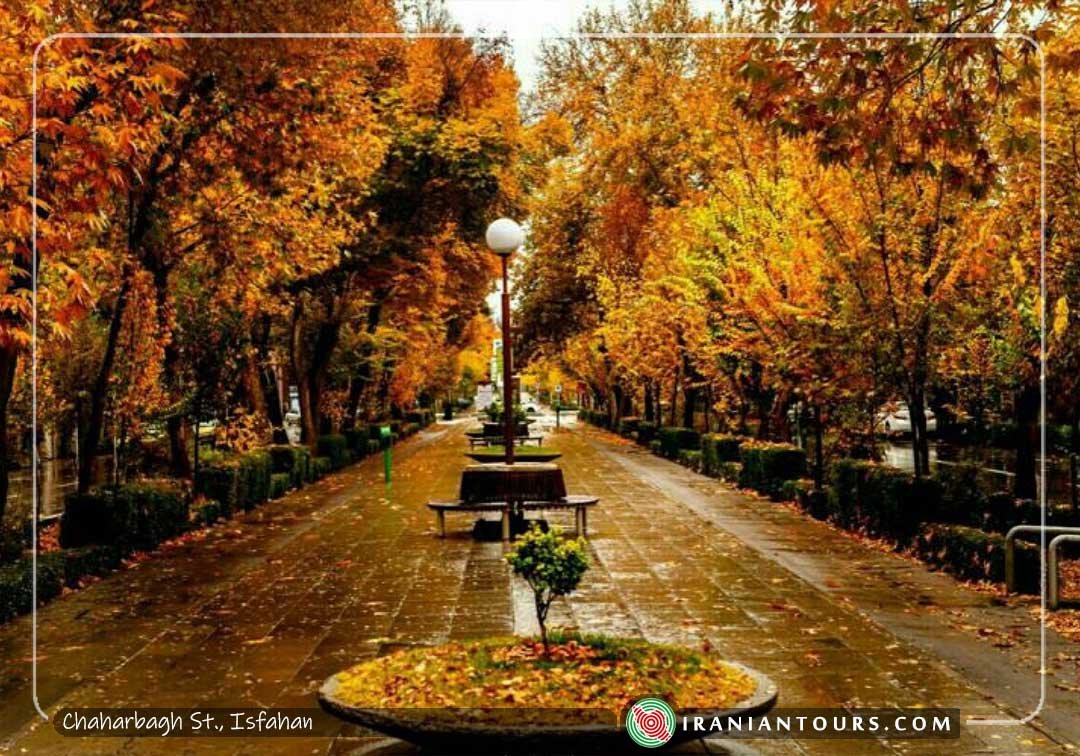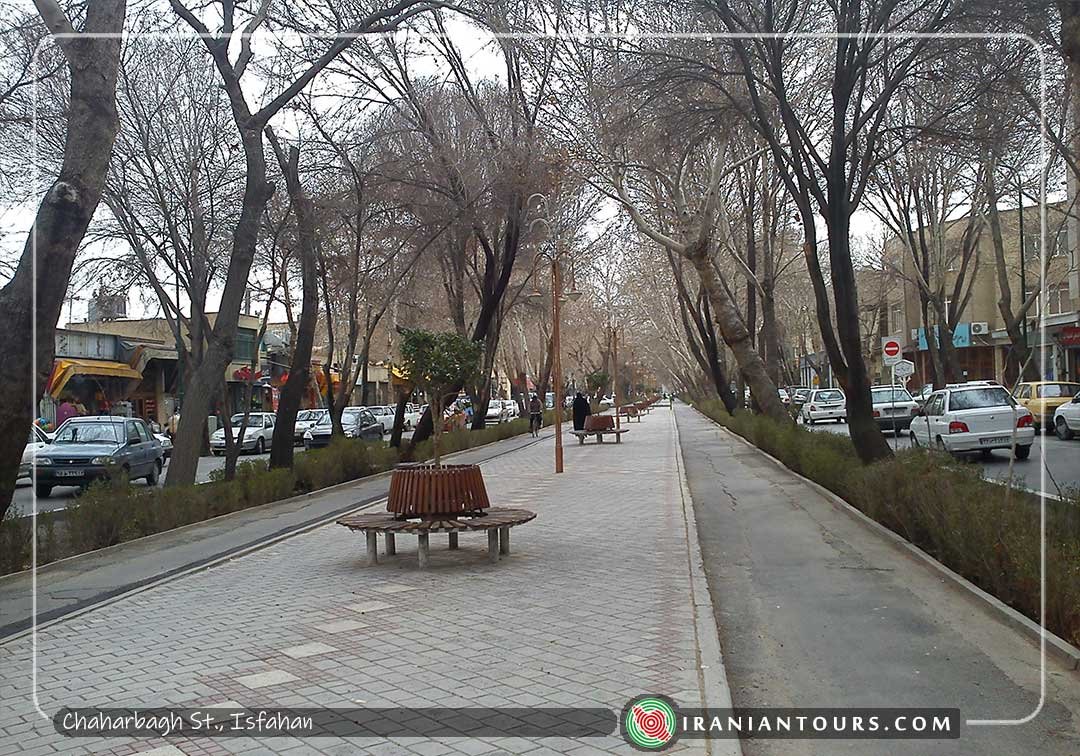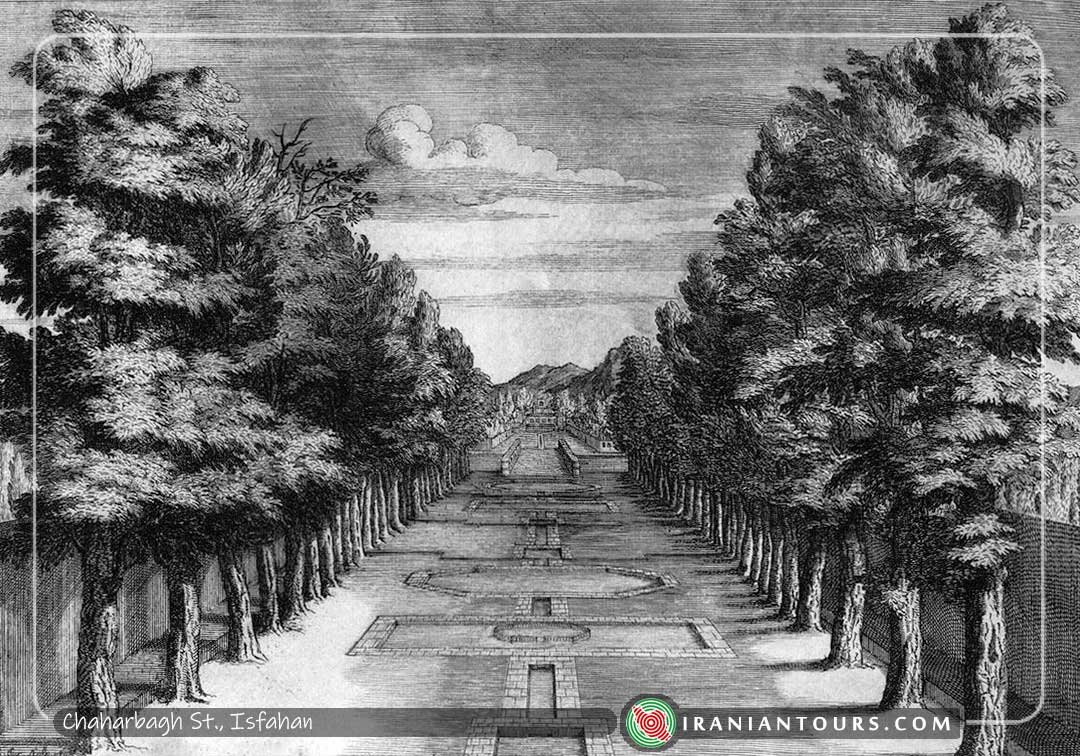ChaharBagh Street
The original Chahar Bagh St. was about six kilometers long. A very wide street, with a canal of flowing water in the centre, and two rows of beautiful tall plane trees.
The Chahar Bagh was surrounded by beautiful orchards (fruit gardens). It was a very pleasant promenade street.
Chahar Bagh consisted of three parts; Central Chahar Bagh, started from present Municipality, stretched to the Allah Verdi Khan Bridge (Sio-Se-Pol). The upper Chahar Bagh began from the Allah Verdi Khan Bridge to the Sofeh Mountain and the lower Chahar Bagh, from present Municipality to Shohada Square.
During Safavid dynasty beautiful orchards were built on the west side of Chahar Bagh St. Royal palaces were constructed from Chahar Bagh Ave to the Royal Naghshe Jahan Square.
Residential areas begun from the eastern part of Naghsh-e-Jahan. Not only Chahar Bagh St. but also orchards and beautiful palaces which were built in centers of gardens were beautifully designed. Travelers who visited Isfahan have explained the Chahar Bagh St. as one of the most beautiful streets of the world.
One day per week was allocated to women. Only women were permitted to promenade in Chahar Bagh and could spend their time for shopping.
During Qajar dynasty even trees of this street were cut and sold and replanted. Chahar Bagh lost its beauty and glory during Qajar dynasty. Isfahan was highly and carelessly expanded during 20th century. Historic gardens were destroyed and converted into shops and houses. Only some parts of two gardens have remained. The Chelel Sotoun garden and the Hasht Behesht garden.





